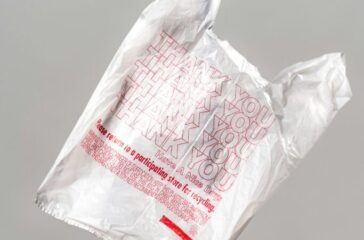Postcard from California: After plastic bag ban backfires, lawmakers seek a fix
By Bill Walker
Ten years ago, Californians threw away an estimated 157,000 tons of plastic bags, about 8 pounds for each person in the state. To stem the tide of polyethylene piling up in landfills, polluting parks and beaches, and imperiling wildlife, that year California enacted the nation’s first statewide ban on single-use plastic grocery bags.
It didn’t work.
In 2021, the latest year for which figures are available, Californians tossed out more than 231,000 tons of plastic bags – almost 12 pounds per person.
Now lawmakers in Sacramento are trying again.
A pair of bills introduced earlier this month – SB 1053 and AB 2236 – would ban the use of all plastic bags by groceries and other stores that sell food. That means not only the flimsy single-use bags covered by the 2014 law, but also the thicker bags that technically can be reused and recycled, but almost never are.
The thicker bags, of the more durable polyethene called HDPE, carry the familiar, but often misleading, “chasing arrows” recycling symbol. But they can’t go in curbside recycling bins, and good luck finding a store that will take them back or a recycling center that will accept them. They’re designed to be reused up to 20 times, but most consumers toss them as soon as they unload their groceries at home.
“A plastic bag has an average lifespan of 12 minutes and then it is discarded… clogging sewage drains, contaminating our drinking water and degenerating into toxic microplastics that fester in our oceans and landfills for up to 1,000 years,” state Sen. Catherine Blakespear, co-author of SB 1053, said in a press release. “It’s time to improve on California’s original plastic bags ban and do it right this time.”
What went wrong? What happened to turn the state’s good intentions into a disheartening lesson in the law of unintended consequences?
Enter the plastics industry.
 EWG
EWG